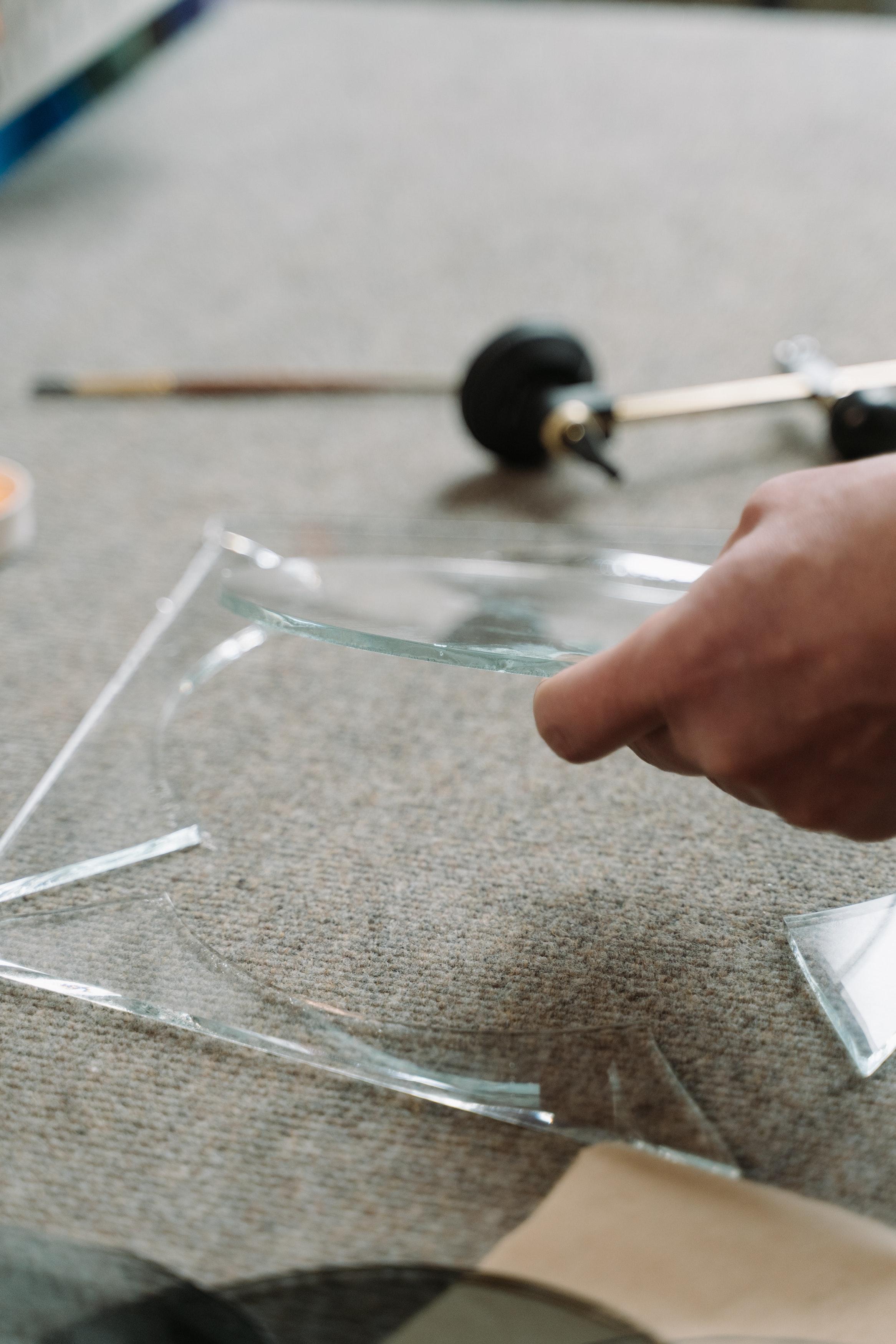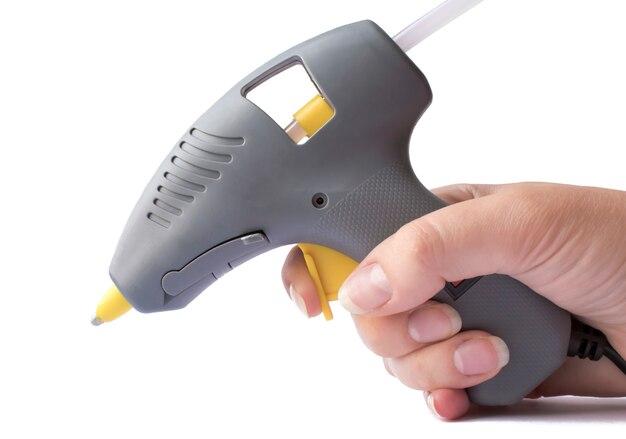Glass, with its unique properties and stunning beauty, has fascinated humans for centuries. From delicate ornaments to functional objects, this versatile material has found its way into every aspect of our lives. But have you ever wondered if you could melt glass yourself? With the right tools and knowledge, it may be possible.
In this blog post, we will explore the question: Can you melt glass with a heat gun? We’ll dive into the science behind glass melting, discuss the temperatures required, and discover the methods you can use to achieve this fascinating transformation. So, if you’ve ever been curious about turning glass into a molten state using a heat gun, keep reading to unveil the secrets of glass melting.
Can a Heat Gun Really Melt Glass
Glass is a fascinating material that has been used for centuries in various applications. From windows to bottles, and from art installations to laboratory equipment, glass is versatile and visually appealing. But can it be melted with something as seemingly ordinary as a heat gun? Let’s dive into this scorching topic and find out!
The Heat Gun’s Fiery Dance
Ah, the heat gun, the tool that can make paint bubble, shrink tubing, and give you a warm breeze on a chilly day. What a versatile gizmo! But can it really produce enough heat to melt glass? Well, the answer is a bit more complicated than a simple yes or no.
The Mysterious Melting Point of Glass
To understand whether a heat gun can melt glass, we need to grasp the concept of the glass’s melting point. Now, hold on to your seatbelts, because things are going to heat up!
Glass generally melts at incredibly high temperatures, usually between 2,500 and 2,900 degrees Fahrenheit (1,400 to 1,600 degrees Celsius). These are some intense temperatures, my friend! And here we are, with our puny heat gun, hoping it can do the impossible.
It’s All About the Wattage
The power of a heat gun, measured in watts, plays a significant role in determining its heat-producing capabilities. Heat guns intended for crafting or household use typically range from 1,200 to 1,500 watts. While these heat guns can indeed get hot enough to soften glass, they may not generate sufficient heat to completely melt it.
Softening, Shaping, and Sculpting Glass
Although a heat gun might not have enough oomph to fully liquefy glass, it can still soften and shape it to a certain extent. By directing the concentrated heat to a specific area, you can make the glass pliable, allowing for bending, molding, or even creating intricate shapes.
Safety First: Glass and Temperature Shock
Before you grab your heat gun and a piece of glass, safety should always be your top priority. Handling hot glass can be dangerous, and temperature shock is a real concern. Rapid temperature changes can cause the glass to crack or shatter, which is never a pleasant surprise.
To prevent any unwanted glass explosions, it’s wise to preheat the glass slowly and evenly. This can be done by placing it in an oven set to a low temperature or by using a kiln specifically designed for glasswork. Remember, we want to shape the glass, not send it flying into a thousand tiny, sharp pieces!
Time to Unveil the Verdict
As we come to the end of our fiery escapade, we must answer the burning question: Can you melt glass with a heat gun?
In theory, if you have enough time, patience, and a heat gun with sufficient wattage, you can indeed soften and shape glass. However, achieving a complete melt is highly unlikely without specialized equipment designed for glass melting, such as a kiln or a glass furnace.
So, while the heat gun won’t turn your glass into a liquid state, it can still be a valuable tool for various glassworking projects. It opens up a world of possibilities for crafters, artists, and DIY enthusiasts who want to shape and mold glass into unique creations.
Remember, safety should always be your guiding light when working with heat and glass. So, next time you reach for your heat gun, be cautious, creative, and enjoy the transformative power of heat on this mesmerizing material we call glass!
FAQ: Can You Melt Glass With A Heat Gun
In this FAQ-style subsection, we’ll answer some commonly asked questions about melting glass with a heat gun. So, grab your safety goggles and let’s dive right in!
How much heat does it take to melt glass
Glass is a fascinating material that melts at high temperatures. To turn it from solid to a molten state, you generally need temperatures above 1,000 degrees Celsius (1,832 degrees Fahrenheit). So, get ready to crank up the heat!
How do you fix a glass pipe with a torch
Oops! Accidents happen, and your beloved glass pipe might need some repair. To fix a glass pipe using a torch, gently heat the damaged area with a propane or butane torch until it becomes pliable. Then, carefully manipulate the glass to reshape or mend it. Just remember, safety first!
Can you fuse glass in a regular oven
A regular oven may be great for baking cookies, but when it comes to glass fusing, it’s a different story. The temperatures required for glass fusing typically range from 1,100 to 1,500 degrees Fahrenheit. Regular ovens are not built to reach such scorching temperatures, so it’s better to leave glass fusing to the professionals or invest in specialized kilns.
Can you fix glass
Yes, you can fix certain types of glass. If a glass object breaks, you can try using specialized glass adhesives to meticulously bond the pieces back together. However, keep in mind that the strength and durability of the repair may vary depending on the type of glass and the extent of damage. The good news is, your favorite vase might have a second chance at life!
How hot is glass when it turns red
When glass turns red, it’s a sign that things are heating up! In scientific terms, glass starts to glow red when its temperature reaches approximately 900 degrees Fahrenheit (482 degrees Celsius). So, if you see your glass turning red, you know it’s getting hot and ready for some serious transformation!
What kind of torch is used for glass blowing
Glass blowing is an art form that requires precise heating. For this craft, glassblowers typically use a specialized torch called a “bench torch.” These torches are specially designed to provide a controlled and intense flame that allows artists to manipulate the glass with finesse. With the right torch in hand, the possibilities are endless!
How long does it take to fuse glass
Patience is a virtue in the world of glass fusing. Depending on the complexity of the project and the type of glass being fused, the process can take anywhere from a few hours to several days. Remember, perfection takes time, so don’t rush the fusion!
What happens when glass melts
When glass melts, it undergoes a mesmerizing transformation. As it reaches its melting point, the glass transitions from a solid to a gooey, molten state. This molten glass can be shaped, blown, or fused, creating unique and beautiful creations. So, watch out for that magical moment when your glass starts to flow like honey!
Can you melt glass in a kiln
Absolutely! Kilns are often the preferred method for melting glass. These specialized ovens can reach the high temperatures necessary to melt glass effectively. So, whether you’re a glass enthusiast or a professional artist, a kiln is your trusty ally in the quest for molten glass mastery!
At what temperature does sand turn to glass
Sand’s transformation into glass is like a Cinderella story! When heated to temperatures around 3,000 degrees Fahrenheit (1,650 degrees Celsius), sand starts to lose its grainy texture and enters a molten state, giving birth to the transparent beauty we call glass. It’s a magical metamorphosis fueled by scorching heat!
What temperature does glass fuse at
Glass fusing happens when different pieces of glass are heated until they bond together. The temperature range for glass fusion typically falls between 1,100 and 1,500 degrees Fahrenheit. Within this fiery range, the glass pieces soften and fuse, creating stunning works of art that can take your breath away!
Can you fuse glass at home
With the right equipment and precautions, glass fusing can be done in the comfort of your own home. However, it’s important to note that glass fusing requires high temperatures and specialized kilns, which can pose safety risks if not handled properly. So, aspiring glass fusers, make sure you’re well-informed, well-equipped, and ready to unleash your creativity safely!
Can I melt glass with a propane torch
Oh, the wonders of propane! While a propane torch can generate significantly high temperatures, it may not always be suitable for melting glass, especially in larger projects. Propane torches typically generate temperatures up to around 3,600 degrees Fahrenheit (1,982 degrees Celsius), which is enough to work on smaller glass pieces but might not cut it for larger-scale melting adventures. It’s always a good idea to match the heat to the task at hand!
What type of glass is used for glass blowing
When it comes to glass blowing, borosilicate glass steals the spotlight! This type of glass contains a higher concentration of silica and boron, making it more resistant to thermal expansion and better suited for the intense heat involved in glass blowing. With its durability and versatility, borosilicate glass is the go-to choice for glass blowers around the world!
How do you melt glass without a torch
If you find yourself without a torch in your glass-melting toolkit, fear not! You can harness the power of your trusty microwave oven. By placing small glass pieces on a microwave-safe surface (preferably on a kiln shelf or a ceramic plate) and using short bursts of microwave heat, you can gradually melt the glass. Keep a close eye on the process, and remember to err on the side of caution!
How do you melt glass at home
Whether you’re exploring glass melting as a hobby or as a serious pursuit, a kiln is your best friend for melting glass at home. Kilns provide controlled and consistent heat, allowing your glass to reach its molten potential. Just make sure you follow safety guidelines, wear appropriate protective gear, and let your creative flames burn bright!
How do you melt glass together
The art of melting glass together is known as glass fusing. To achieve this, you’ll need to stack or arrange different pieces of glass in a kiln and gradually raise the temperature until they bond together. The heating process brings out the inner beauty of each piece as they merge, creating stunning patterns and designs. It’s a dance of heat and creativity!
How can you make a hole in glass without tools
Need to make a hole in glass but find yourself without the right tools? Fear not, resourceful soul! With a little ingenuity, you can use a technique known as “thermal shock.” Simply heat the area where you want the hole with a small flame, like a candle, and then quickly cool it with a blast of cold water. The rapid temperature change can cause the glass to crack, creating a hole. Just remember, safety goggles and gloves are your best friends during this thrilling glass-cutting adventure!
And there you have it, a comprehensive FAQ section packed with answers to your burning questions about melting glass with a heat gun. It’s time to gather your glass, channel your inner artist, and let the heat gun work its magic. Stay safe, get creative, and enjoy the beautiful world of molten glass!

